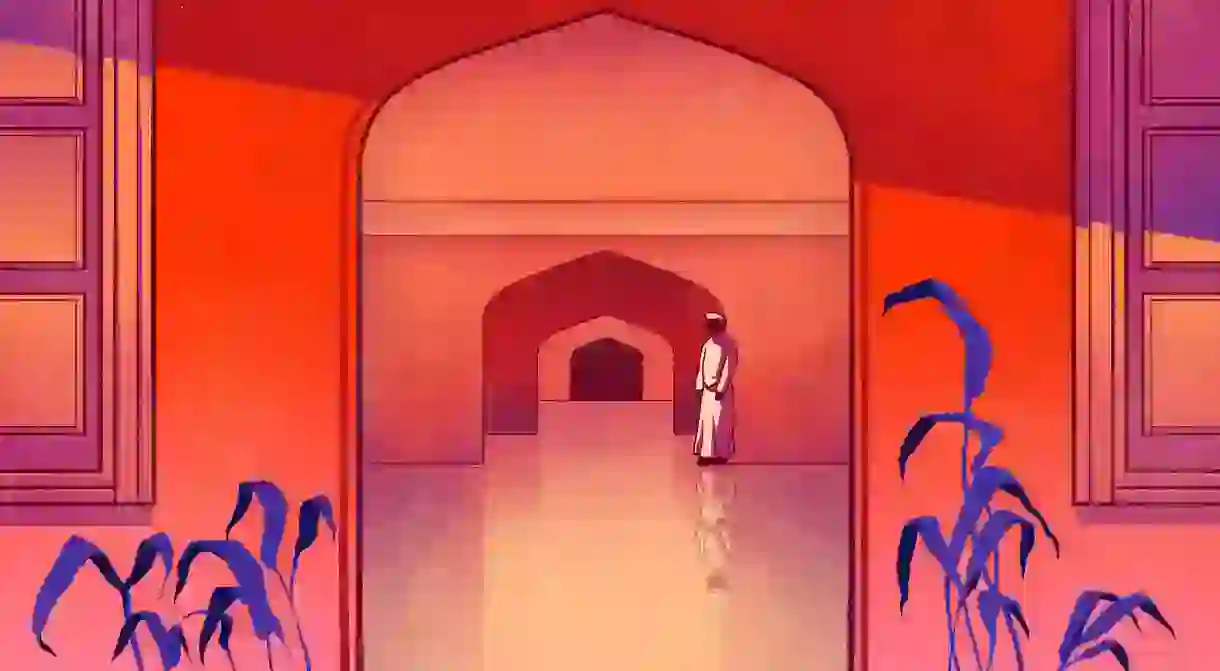A Look at the Ancient Doors of Oman

As one of the oldest countries in the Middle East, culture and Oman go hand in hand – its thousands of forts, souks and ancient ruins enchanting travellers with the age-old traditions of the Sultanate. Two elements of Omani architecture help shed a deeper light on that past: the historic doors and windows that adorn its heritage sites and museums.
Over the centuries, the traditional doors and windows of Oman have stood the test of time. From historic buildings to modern structures, their influence can be seen from one end of the country to the other. Some have even become important parts of local lore, others inspiration for artists. In villages, towns and cities, their unique elegance continues to make the country’s traditional style of architecture stand out. Italian conservator Gianluca Regoli knows all too well what makes them so special.

Regoli, a graduate of Rome’s Istituto Superiore per la Conservazione ed il Restauro, has years of experience in the field. An invitation from the archaeologist Professor Maurizio Tosi first brought him to Oman in 2013. He has been coming back ever since. Together with fellow conservator Francesca Romana Radiciotti, he owns Regoli e Radiciotti srl, a conservation company that works with the Sultanate’s National Museum and Ministry of Heritage and Culture.
“All over Oman, especially in the interior around Nizwa and Izki, it is still easy to find many abandoned old mud-brick houses that conserve, entirely or in part, old handmade carved wooden doors and windows with their decorated frames and details often painted in bright colours,” says Regoli.
“Doors and windows have been one of the most important forms of decorative expression to be found in Omani buildings. In the past, such doors were considered symbols of status and hospitality.
“In traditional Omani architecture wooden doors, windows, frames, grills and shutters are important elements in the decoration and embellishment of royal and private houses and are often the most elaborately decorated features.”
Regoli explained that the doors vary in style and dimension, as well as in their carvings, yet “are always characterised by the presence of typical elements such as frames and central door jambs that are very accentuated. The decoration is limited to the outer side as well as the coloured painted layer, while their back side remains plain and shows all the structural components.”

Metal has played an important role in their design, serving as structural “joints” and for decorative purposes. Round-headed nails are organised to create lines as “additional decoration on the front side of the door,” he added.
According to Regoli, highly decorated door knockers (commonly made from copper alloy) feature geometric patterns and Arabic inscriptions. On the functional side, the door closing mechanism utilises a simple system involving two pivots carved in the wood that were used to rotate the shutters.
The strong, sturdy doors are impressive. Many of the ones encountered by the Regoli e Radiciotti team are made from teak and mountainous trees. Finding the right variety of wood in Oman would have been difficult, Regoli explained.
That is where Oman’s historic trade networks came in.
For generations, seafarers from Oman connected ports dotting the country’s coast with counterparts in Asia and Africa. That helped provide a vital source for wood as well as inspiration for designs that would be used on the doors.
“Traditional Omani doors used for homes were hand-carved with floral patterns (commonly rosettes) and other geometrical designs, often with the name of the owner cut in attractive Arabic script. The amount and quality of the carving was also related to the price of the door and would therefore reflect the status of the household.”

Today, they add to the aesthetic beauty of many of the villages and towns where they are found.
“These old buildings made using ancient techniques look absolutely wonderful with their traditional doors and windows,” says Nicola Pagani, a conservation expert and member of the Regoli e Radiciotti team.
With his colleagues, he’s worked on conservation projects across Oman. That work has brought them into contact with Bronze Age bows, Iron Age swords, inlaid shells and manuscripts from different historical periods. And the traditional doors and windows are among the most interesting things they’ve seen. Thanks to their rich textures and graceful patterns, it is no wonder they have become icons of the country’s past.













